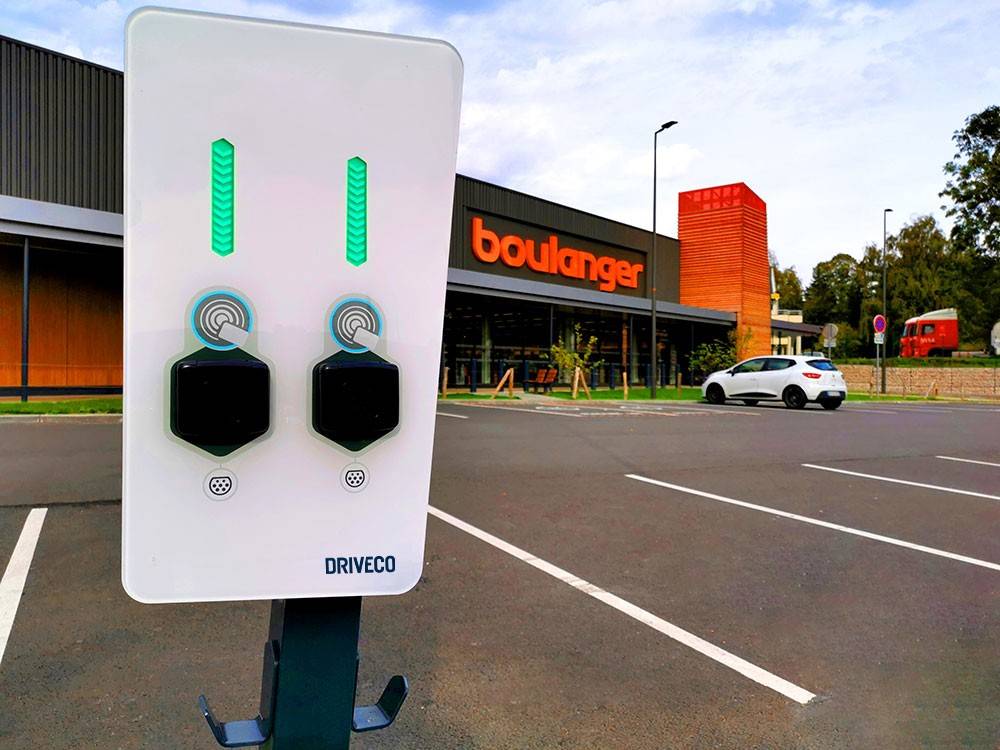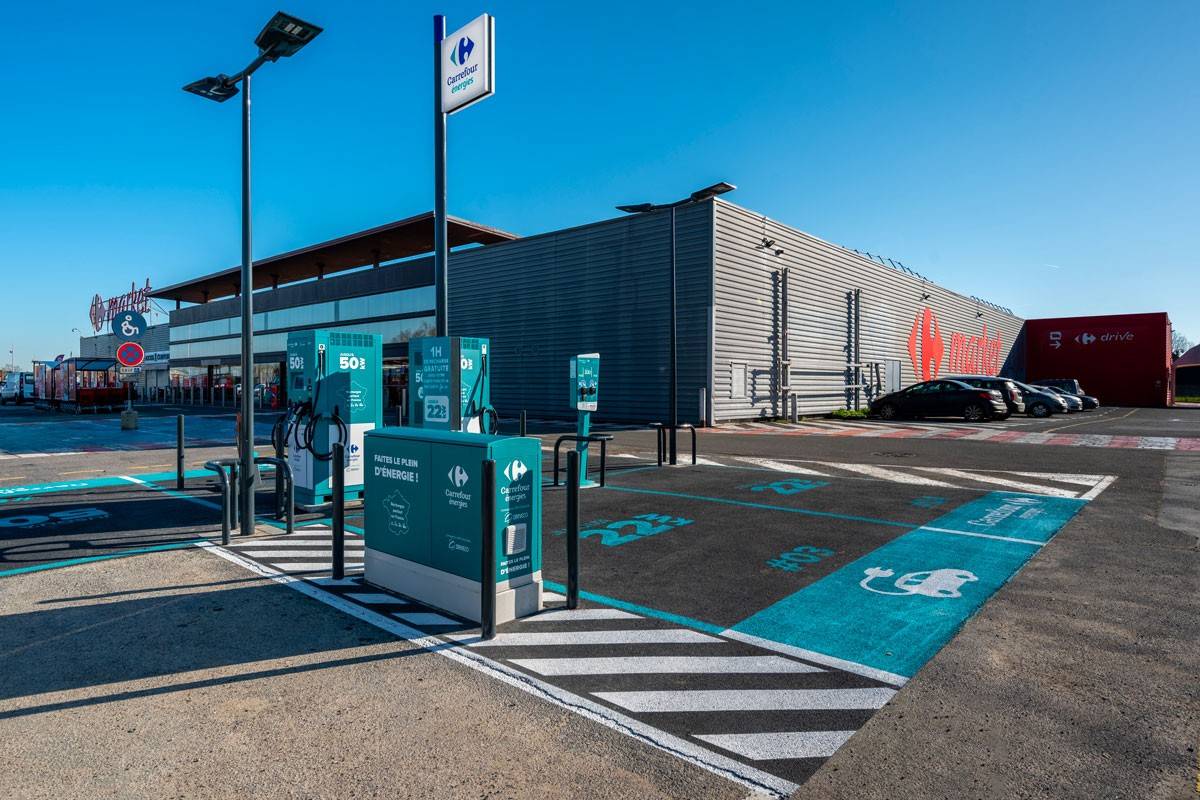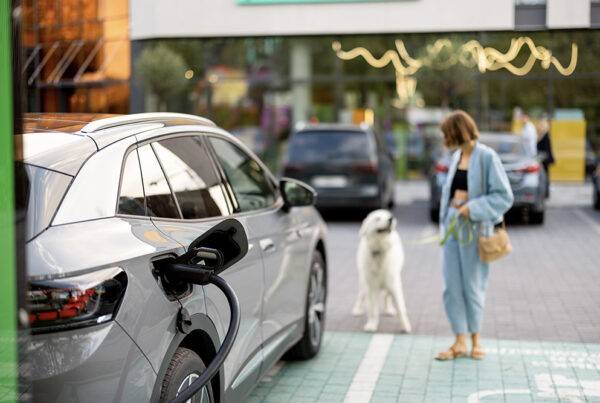The Mobility Orientation Law (LOM) of 24 December 2019 aims to reduce greenhouse gas emissions, with the ultimate goal of achieving carbon neutrality in land transport by 2050. This energy transition includes the end of sales of fossil fuel-powered vehicles by 2040 and the widespread deployment of electric charging infrastructure. As such, the LOM already requires certain businesses and retail outlets to install charging stations. Here’s what you need to know!
LOM and Charging Stations: Who Is Affected?
The obligation to pre-equip or install charging stations primarily applies to:
• businesses,
• local authorities,
• building managers.
This concerns industrial or commercial buildings, retail outlets, cinemas, and public services with parking facilities. The obligations vary depending on the size of the car park, the activity, and the year the public-facing building was constructed.
Pre-equipping charging stations for new constructions
Pre-equipping parking spaces aims to prepare the infrastructure to facilitate the future installation of electric charging stations. This involves setting up the necessary electrical connections and sizing the power required to supply the future charging stations.
- For buildings constructed after 11 March 2021
Since the LOM came into force, certain non-residential buildings with car parks of at least 10 spaces must be pre-equipped with charging stations if their construction permit was filed after 11 March 2021.
- For Renovated Buildings
Buildings undergoing significant renovations (including parking facilities or their electrical installations) from 11 March 2021 are subject to the same pre-equipment requirements as new buildings.
“Significant renovation” refers to works where the renovation value represents at least one quarter of the building’s value.
Pre-Equipment: Quotas Set by the LOM
In parking facilities with more than 10 spaces, one in five spaces must be pre-equipped with electric vehicle charging points. Additionally, 2% of these spaces must be sized for persons with reduced mobility (PRM), with the law requiring at least one such space.
Car parks with more than 200 spaces must include at least two PRM-sized spaces, one of which must be equipped with a charging point reserved for PRMs.
Installation of electric charging stations: What are the obligations for existing buildings?

Charging station installation deadline: 1st of January 2025
From January 1st 2025, all existing public-facing buildings with car parks of more than twenty spaces will be required to provide charging stations for electric vehicles.
- At least 5% of spaces,
- At least one charging space must be sized for a PRM vehicle,
- For car parks with more than 200 spaces: 2 spaces with charging points must be sized for PRMs, and one of these must be exclusively reserved for their use.
Additionally, for new buildings where the construction permit has been filed since 2017, the LOM imposes specific quotas for charging station installation, depending on the number of available parking spaces.
For Tertiary, Industrial, and Public Service Buildings:
- 10% of spaces must be equipped if the car park has up to 40 spaces,
- 20% if the car park has more than 40 spaces.
For retail outlets and cinemas, the quotas are 5% and 10%, respectively.
Note:
The “Climate and Resilience” Law of 22 August 2021 imposes a similar equipment obligation on local authorities by 1 January 2025 (car parks with more than 20 spaces managed under public service delegation, direct management, or via public procurement).
What Are the Rules for Renovated Buildings?
For existing buildings undergoing significant works affecting the car park and electrical installations, the charging station quotas vary depending on the year the construction permit was filed:
- Buildings with permits filed between 1 January 2012 and 1 January 2017 must have 10% of parking spaces equipped with charging stations;
- Those with permits filed before 2012 are subject to an equipment quota of 5% to 10%, depending on their location:
- If the building is located in an urban area with more than 50,000 inhabitants, these buildings must meet a 10% quota;
- Otherwise, the installed charging stations must cover 5% of the parking spaces.
Sizing electrical installations and compliance standards
What Sizing for Electrical Installations?
To power the charging infrastructure, electricity must be delivered:
- Via a low-voltage general switchboard (LVGS) from the building’s internal electrical installation;
- or, via a public electricity grid facility located within the building’s footprint.
For pre-equipment, the LOM requires the installation of conduits sized to allow for a square passage of at least 100 mm on each side to carry the energy to the charging point.
In either case, the LVGS must be sized to power at least 20% of the total parking capacity, with a minimum of one space equipped with a charging station. The required power will vary depending on the number of available parking spaces.
| Number of parking spaces | Charging points in car parks (for professional and/or public service vehicles) | Charging points in car parks for other vehicles |
|---|---|---|
| 10 ≤ N ≤ 20 | 15 kVA | 22 kVA |
| 21 ≤ N ≤ 40 | 22 kVA | 33 kVA |
| 41 ≤ N ≤ 100 | 30 kVA + 6 kVA (per 10-space increment beyond 50) | 44 kVA + 8 kVA (per 10-space increment beyond 50) |
| 101 ≤ N < 200 | 60 kVA + 3,6 kVA (per 10-space increment beyond 100) | 84 kVA + 5 kVA (per 10-space increment beyond 100) |
| N > 200 | 96 kVA + 0,2 kVA x (N-200) | 134 kVA + 0,28 kVA x (N-200) |
What technical and safety standards apply to charging stations?
The LOM sets the technical and safety standards for electric and hybrid vehicle charging stations, specifically addressing:
- charging power,
- electrical safety measures,,
- communication protocols between charging stations and vehicles.
The law also includes provisions regarding:
- charging speed,
- accessibility of devices,
- payment methods in public spaces.




